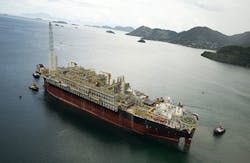Robin Dupre
HOUSTON–While this year is likely to see a renewed level of mergers and acquisitions activity across the oil and gas sector globally, 1Q 2015 witnessed stalled activity due to a low oil price environment. However, corporate deals surpassed asset transactions for the first time in five years, according to a recent analysis of 1Q 2015 oil and gas industry M&A activity by PricewaterhouseCoopers US (PwC).
M&A in the oil and gas industry saw a “decrease in terms of deal value and volume in the first quarter of 2015 compared to the fourth quarter of 2014, as the drop in oil prices continued to impact companies’ growth strategies,” PwC said. “While the decrease in deal activity was consistent with first quarter historical trends, corporate deals surpassed asset transactions for the first time since 2010.”
When global crude prices almost halved to around $60/bbl in the past year, slashing company values, forcing budget cuts and putting more than $150 billion of oil and gas exploration projects at risk, many small-level companies became at risk for buyout by the majors. The depressed market presents an opportunity for well-capitalized operators and service companies to enhance their assets and capabilities with strategic acquisitions.
“This market attracts the folks that see it as a valuable opportunity,” Melinda Yee, partner, Oil & Gas M&A Leader, Deloitte, toldOffshore. “That creates opportunities for those individuals that really have strong balance sheets, whether that’s strategy buyers or professional-type investors such as private equity.”
While some investors are taking a wait-and-see stance, others are more bullish. For example, in April, Shell offered to acquire BG Group’s entire share capital for around $70.2 billion. The board of both companies has recommended that their respective shareholders endorse the acquisition. Shell stated that the combination would accelerate its growth in global LNG and deepwater E&P, particularly in Australia and Brazil, and would add around 25% to Shell’s proven oil and gas reserves and 20% of its production, each on a 2014 basis.
Shell CEO Ben van Beurden said: “BG and Shell are a great fit. This transaction fits with our strategy and our read on the industry landscape around us. This transaction will be a springboard for a faster rate of portfolio change, particularly in exploration and other long-term plays.”
Antoine Paillat of Douglas-Westwood London notes that Shell could benefit from “long-term organic growth opportunities” and so, from this perspective, the takeover of BG Group makes sense. “It will boost Shell’s production by 20% and reserves by 25%, and will also provide exposure to high-potential Brazilian assets,” Paillat noted. “With similarly modest leverage and the potential for quick cash generation, Exxon and Chevron are well positioned for their own M&A moves now that the starting gun has sounded.”
Around $31 billion in investment was poured into the oil and gas sector in 2014, outstripping the $8 billion that sponsors have invested in the sector over the five years prior, according to Reuters data. After equity investments in the software sector, oil and gas came in second on buyout groups’ activity in 2014.
Additional investment opportunities are expected to become available. Based on company filings and announcements compiled by oil and gas consultancy 1Derrick, assets worth about $112 billion are up for sale, according to Reuters.
“Half of these are North American, mostly US, oil and gas shale fields such as Anadarko’s Wyoming field and Reliance Industries’ Eagle Ford assets, as well as ConocoPhillips’ oil-sands operations in Canada,” according to Deloitte. “Outside North America, Russian oil giant Rosneft is offering its non-core operations while Apache has mainly Egyptian assets for sale,” the firm noted.
The year 2014 will be hard to top in M&A total value activity due to the $38-billion merger of Halliburton and Baker Hughes. A total of 39 oil and gas deals were made, with values greater than $50 million, accounting for $34.5 billion, compared to 70 deals worth $103.5 billion on a sequential basis, and 60 deals worth $26.4 billion in 1Q 2014, according to PwC US.
For deals valued at more than $50 million, there were 26 corporate deals worth $30.4 billion verses 13 asset deals worth $4.1 billion in 1Q 2015. Corporate deals represented 67% of the total deal volume and 88% of the total deal value, which included two midstream megadeals (deals valued more than $1 billion) in the quarter. Overall, there were four megadeals worth $23 billion, representing 67% of total deal value.
However, “the declines in deal activity that we saw in the last two months of 2014, particularly in the upstream space as a result of the drop in oil prices, continued in the first quarter of 2015,” said Doug Meier, PwC’s US energy sector deals leader. “The velocity and magnitude of the decline in oil prices have caused companies to focus internally on cost reduction and productivity enhancement activities, which have taken attention away from M&A as a growth vehicle. However, the current low price environment may present opportunities for potential acquirers who have the balance sheets to finance deals and the investing horizon to see through the current lows of the business cycle.”
If the industry looks to previous years’ activity, E&P transactions continued to make up the majority of M&A activity, comprising 74% of total oil and gas transactions in 2014, Deloitte’s Yee added.



